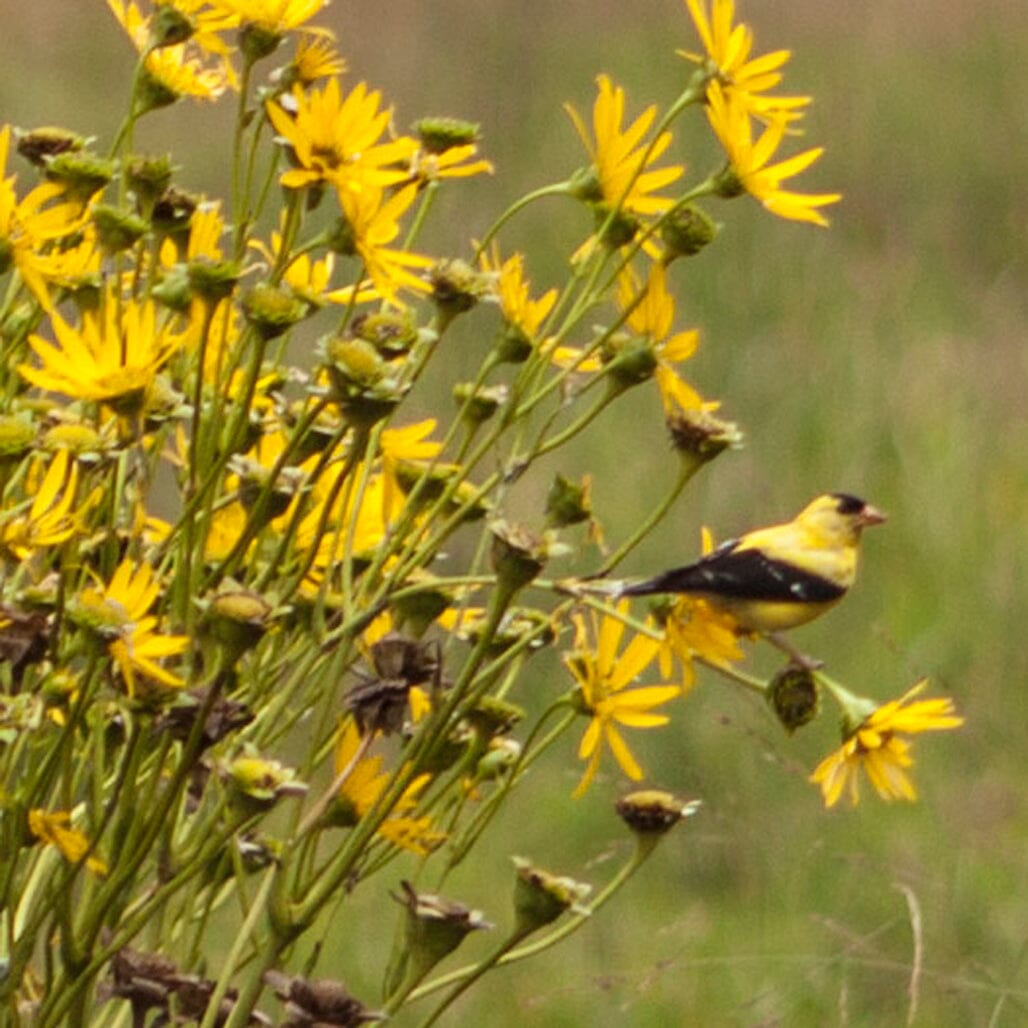Eastern Shore life is relaxing and beautiful, that is after we sit down for the day! Over the past few years, we have put in endless hours on our Kent Island farm to create the perfect environment for native plants and animals, including the Eastern Goldfinch or better known as the Eastern American Goldfinch. Our bees produce two types of our Eastern Shore Honey, thanks to our efforts of planting sources of nectar. To share our paradise with you, we're publishing our Eastern Shore Life series to spotlight activities on the farm.
Eastern American Goldfinch on the Farm
One of our most colorful visitors is the Eastern Eastern American Goldfinch. The Eastern Goldfinch, also known as the American Goldfinch, is a small songbird that belongs to the finch family. They are native to North America and can be found throughout most of the United States and parts of Canada. These birds typically measure around 4-5 inches in length and weigh around 0.4-0.7 ounces. Their most striking feature is their bright yellow plumage, which appears during the breeding season. In winter, they molt their bright feathers and take on a dull yellow or olive-brown coloration to blend in with their surroundings.
These bright little birds love flowers and will flock on the seed-heads once the plants finish blooming. On the farm, the birds come in droves to feed, and their bright songs add ambiance to the shoreline. Goldfinches have a distinct "rollercoaster" flight pattern, where they dip up and down in the air as they fly. This bouncy flight pattern makes them easy to spot from a distance, as do their bright color and surprisingly loud call.

The habitat of the Eastern Goldfinch varies greatly depending on the season. During the breeding season, they prefer open areas such as fields, meadows, and gardens that have plenty of sunflowers, thistles, and other weeds that they feed on. In winter, they move to brushy areas, woodlands, and hedgerows that provide shelter from cold winds. They are also known to migrate to Southern Canada, Mexico, and parts of the Caribbean during winters.
The Eastern Goldfinch stay on the Eastern Shore year-round but are most plentiful during the summer and fall when food sources are the most abundant. On the farm, we installed around 20-40 acres of native wildflowers and removed hundreds of non-native plants. Bee balm and daisies make up a huge portion of our meadows, and thistle grows wild in huge swaths. Coneflowers are also a favorite of finches-they produce huge amounts of seed that ripens in the fall. This provides a food source for the birds from October through the cold months when other food can be scarce.

Shasta daisies, while not a native plant, are still beautiful and give a source of food to insects. Native coreopsis (the bright yellow flowers) are tough and plentiful. These blossoms drop loads of seed and can spread rapidly. Eastern goldfinches also feed on these, and it's quite a show to watch them dangle off the spindly branches to pluck the seeds from the spent buds.

Goldfinches love Black-eyed Susans. The Maryland state flower grows wild on our farm, forming large clumps of dark green foliage. Blooming from the start of July to the fall, you can find all sorts of critters on the flowers. Honeybees love them, and so do butterflies! Black-eyed Susans provide another food source in the fall for native birds.
The Eastern Goldfinch is named for its distinctive 'pouring-sweet' song, which is a delightful sound to hear in any natural space. During the breeding season, males sing to establish territories and attract mates. This tiny bird has also become a favorite backyard bird for many people due to their bright colors and gentle nature. They are easy to attract by putting up a bird feeder with sunflower seeds or thistle seeds.
The Eastern Goldfinch is a bird that has captivated people's hearts for centuries. Their stunning yellow coloration, unique behavior, and melodious singing make them fascinating to observe and study. They also hold significant symbolic meanings in different cultures, such as good luck, happiness, and spiritual awakening. As we continue to explore the world of nature, let's not forget to cherish these small moments of beauty, where we can connect with the world around us and discover hidden treasures. Perhaps, you too can join a community of Eastern Goldfinch admirers and share your sightings of these much-loved birds.

Creating your own Eastern Shore Life
For information on the best native wildflowers and how to grow them, visit Tips Bulletin or your favorite local nursery. Reintroducing native plants to your property only helps to increase its beauty and the health of the ecosystem, and will provide you with a carefree landscape for years to come.



